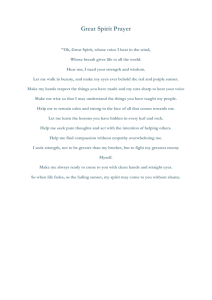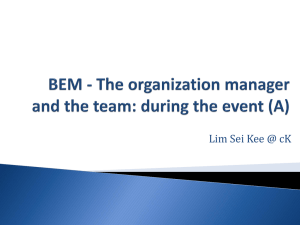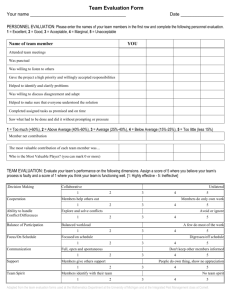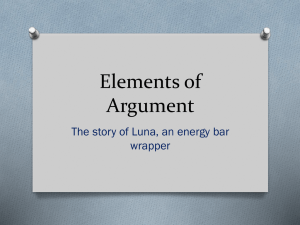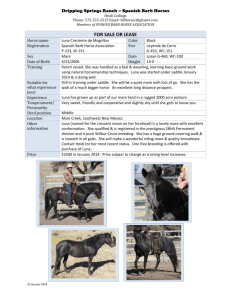Frederic Thompson, "Amusing the Million,"
advertisement
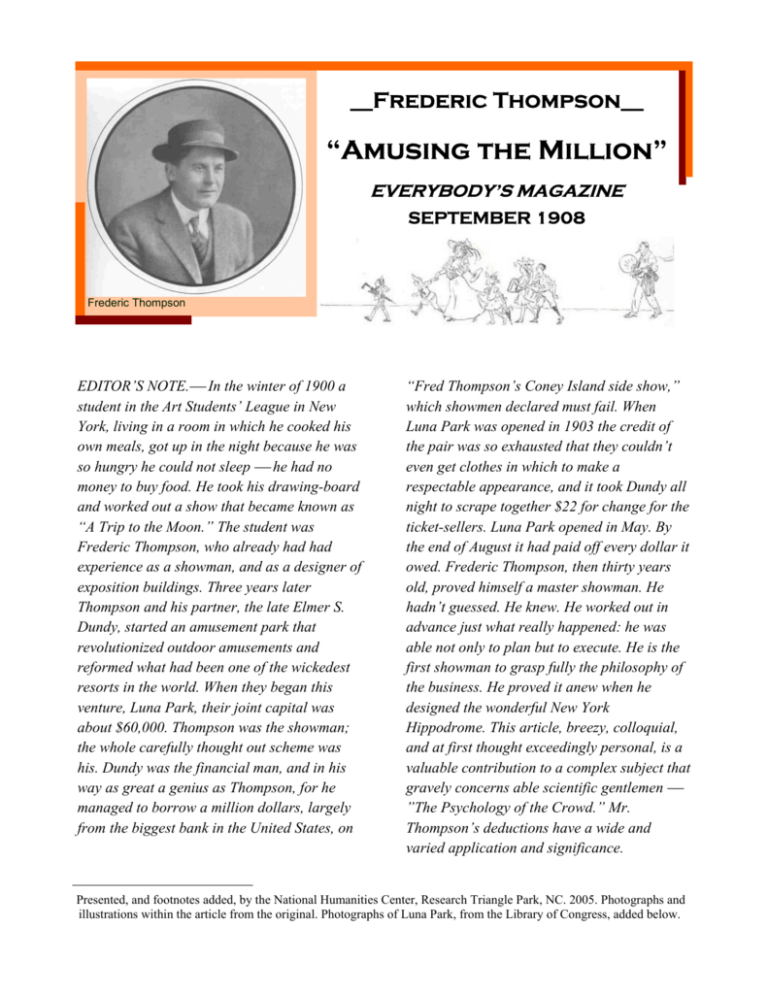
__Frederic Thompson__ “Amusing the Million” EVERYBODY’S MAGAZINE SEPTEMBER 1908 Frederic Thompson * EDITOR’S NOTE. In the winter of 1900 a student in the Art Students’ League in New York, living in a room in which he cooked his own meals, got up in the night because he was so hungry he could not sleep he had no money to buy food. He took his drawing-board and worked out a show that became known as “A Trip to the Moon.” The student was Frederic Thompson, who already had had experience as a showman, and as a designer of exposition buildings. Three years later Thompson and his partner, the late Elmer S. Dundy, started an amusement park that revolutionized outdoor amusements and reformed what had been one of the wickedest resorts in the world. When they began this venture, Luna Park, their joint capital was about $60,000. Thompson was the showman; the whole carefully thought out scheme was his. Dundy was the financial man, and in his way as great a genius as Thompson, for he managed to borrow a million dollars, largely from the biggest bank in the United States, on * “Fred Thompson’s Coney Island side show,” which showmen declared must fail. When Luna Park was opened in 1903 the credit of the pair was so exhausted that they couldn’t even get clothes in which to make a respectable appearance, and it took Dundy all night to scrape together $22 for change for the ticket-sellers. Luna Park opened in May. By the end of August it had paid off every dollar it owed. Frederic Thompson, then thirty years old, proved himself a master showman. He hadn’t guessed. He knew. He worked out in advance just what really happened: he was able not only to plan but to execute. He is the first showman to grasp fully the philosophy of the business. He proved it anew when he designed the wonderful New York Hippodrome. This article, breezy, colloquial, and at first thought exceedingly personal, is a valuable contribution to a complex subject that gravely concerns able scientific gentlemen ”The Psychology of the Crowd.” Mr. Thompson’s deductions have a wide and varied application and significance. Presented, and footnotes added, by the National Humanities Center, Research Triangle Park, NC. 2005. Photographs and illustrations within the article from the original. Photographs of Luna Park, from the Library of Congress, added below. T accepted as a matter of course. The picnic and the open-air park are designed to give the natural, bubbling animal spirits of the human being full play, to give people something fresh and new and unusual, to afford them respite from the dull routine of their daily lives. The one thing that makes a picnic or an amusement park a success it doesn’t make any difference whether the picnic is made up of ten people or ten thousand, whether the park is a little one or a great international exposition the one thing absolutely necessary is the carnival spirit. Without that no show in the open, nothing that has to do with people in the mass, can hope to succeed. Whenever any enterprise that is intended to appeal to the million fails, the failure can always be traced to the lack of carnival enthusiasm. This spirit of gaiety, the carnival spirit, is not spontaneous, except on extraordinary occasions, and usually its cause can be easily traced. Almost always it is manufactured. Take a big political meeting, for instance. Ninety-nine A POPULAR AMUSEMENT PARK FEATURE: “KING,” THE DIVING HORSE times out of a hundred the to serve. This isn’t just a general statement. I steps that culminate in a great outburst are always believed it. I have proved it by studying carefully planned. There are men who make it a the twenty-five million people that have visited business to insure the success of great mass Luna Park in the past five years. I haven’t any meetings. When you get right down to it, the use for the bad five per cent. As a showman I fundamentals are the same, whether the don’t want them to come near my enterprises. application is to a church picnic, a political In the theatre and in the Sunday-school meeting, a circus, or a big exposition. The first conventional standards of behavior are HE difference between the theatre and the big amusement park is the difference between the Sunday-school and the Sunday-school picnic. The people are the same; the spirit and the environment are wholly different. It is harder to make the picnic successful than successfully to conduct a session of the school; and it is harder to make a success of a big amusement park than of a theatre. There isn’t any irreverence in this comparison with the Sunday-school, for if the amusement park doesn’t attract people who are interested in the Sunday-school, it isn’t going to succeed. For I want to say at the beginning that ninety-five per cent of the American public is pure and good, and it is this public that it pays 2 step, as far as the public is concerned, is to create an impression that there will be things doing, to get emotional excitement into the very air. In the Sunday-school picnic they talk about the picnic for weeks in advance, telling the children and grown-ups what a fine time they are going to have. The circus does the same thing with its flaming bill-boards and its parade. The political managers talk about the famous speakers who will address the meetings, about the band. You see, it’s all the same, fundamentally. JEANNETTE ST. LEON, WHO AT EIGHTEEN IS AN EQUESTRIENNE ACROBAT AND A TIGHT-WIRE PERFORMER In big amusement enterprises that appeal to the masses the spirit of gaiety is manufactured just as scenery, lights, buildings, and the shows generally are manufactured. That’s the business of the showman to create the spirit of gaiety, frolic, carnival; and the capacity to do this is the measure of his mastery of the craft. Nearly all the big national expositions fail financially because, while in essence they are really nothing but shows, almost never is one run by a showman. When people go to a park or an exposition and admire the buildings, the exhibits, and the lights without having laughed about half the time until their sides ached, you can be absolutely sure that the enterprise will fail. I have been giving generalities. The only way I know of driving home these points is to tell some of my own experiences. In the year 1901 I had a show called “A Trip to the Moon” on the Midway at the PanAmerican Exposition in Buffalo. Architecturally and from an educational standpoint this exposition was one of the most remarkable in all the history of world’s fairs. It was beautiful; it was tremendous; but it wasn’t paying. After several months I went to the executive committee and to the president and told them why their outlay of millions of dollars was attracting only thirty thousand people a day. I told them they were failing miserably because there wasn’t a regular showman in the lot. I told them about the carnival spirit, and they came back by telling me about the educational value of the exposition. “But what’s the use of a college if there are not students?” I asked. “Before we talk of educational benefits let’s get in the crowd to educate.” They didn’t take kindly to my notions at first. Then I suggested that they turn over the show to me for one day, which would be sufficient to test what the executive gentlemen were pleased to call my theories. President Milburn was with me, and I finally won the point. The exposition was to be mine for August 3, and I told them that it would be known as “Midway Day.” Within six hours after the final interview I had four printing-houses at work getting out the paper with which I was going to plaster the country. I and my side-show associates sent ten advance men on the road to herald the coming of the big day, and within a week a large part of the eastern half of the United States was screaming: “August third! Midway Day at the Pan-American! Don’t miss it!” 3 They didn’t. On the night of August 2 a crowd of would-be excursionists was left on every railway station within twenty-four hours’ ride of Buffalo, and when the gates of the exposition were thrown open, the police reserves had to be summoned to stop a panic. They arrived too late to prevent ten thousand people from forcing their way in without paying. There were more than enough left to make the gate receipts satisfactory. Up to MRS. FREDERIC THOMPSON, NÉE MABEL TALIAFERRO, WHO DOES HER SHARE IN AMUSING THE MILLION August 3, the average daily admissions were about thirty thousand. On Midway Day 142,000 paid to get into the grounds, and from that time on the attendance was tremendous. How was it done? By paying no attention to Machinery Hall, the architectural beauty of the State Building, or the interesting exhibits of Trade and Industry; and by smearing the signboards of forty-five states with the carnival spirit. Instead of advertising an organ concert in Music Hall we yelled ourselves hoarse about high diving, greased poles, parades, and every other crazy thing we could think of. I instructed all bands to play marching and to go to the band-stands only when they wished to rest. To the Stadium, which had never held a quarter of its capacity, I drew 23,000 people to see a race contested by an ostrich, a camel, an elephant, a man on a bicycle, another on a horse, an automobile, and a zebra. I had a man sliding by his teeth from the top of the sky-scraping electric tower to the esplanade below. True, he had never before traveled more than thirty feet in that fashion, but we tied him on, so there was no danger. The illusion was great and the stunt made a sensation. In every part of the grounds something extraordinary was going on all the time. There were speed, light, gaiety, color, excitement. The crowd entered into it. They didn’t sit on the benches and admire the sculptural work with the aid of official guides not a bit of it. They joined in the spirit of the occasion they caught the carnival spirit and the PanAmerican was “made,” as far as any exposition could be made at such a late day. To create a carnival spirit a showman may use other means than ballyhoos which means the sample shows on the outside, with the patter of the barkers bands, freak shows, and free circuses. I use architecture. It’s all right to copy the capitol at Washington in making a state building at an exposition, and there is no objection to constructing Machinery Hall and the House of Manufactures with an outward indication of the staid and serious exhibits within if the heads of the exposition are philanthropists. But if they are trying to have their enterprise make both ends meet it is suicidal. The scenery of a comic opera suggests the spirit and the environment of the piece, and the scenery of an exposition or an amusement park must do the same if the place is to score what in theatrical parlance is known as a “hit.” 4 Straight lines are necessarily severe and dead. They have no right in the place of honor of a great outdoor show. The very architecture must be in keeping with the spirit of carnival. It must be active, mobile, free, graceful, and attractive. It must be arranged so that visitors will say, “What is this?” and “Why is that?” When I was studying architecture I paid a great deal of attention to the vignola1 and to the other classically conventional standards of construction. I was like every other architect. But when I started to build I realized that I, like everyone else, was obtaining absolutely conventional results. So one day I threw all my books and plans on to the ash-heap and decided to start after something new. I began designing, not after classical models, but with a sense of their proportions. I stuck to no style. I adopted what I thought was best in Free Renaissance, but reserved the right to use all the license in the world and to inject into everything I did the graceful, romantic curves of the Oriental. One result is Luna Park, the sky-line of which is utterly unlike anything else of its kind in the two Americas. The architecture of Luna Park helps rather than hinders the spirit of carnival. Luna Park has been, and is, tremendously successful. There are other amusement parks in its vicinity that are chastely beautiful from an artistic standpoint, but that so far as dollars and cents are concerned are utter failures. Visitors admire the buildings and don’t go near the shows. I have built their sort of buildings, too, but not for a Luna Park. They don’t pay. An exposition is a form of festivity, and serious architecture should not enter into it if it will interfere with the carnival spirit. In amusing the million there are other essential elements besides gaiety. One is decency the absolutely necessary quality in every line of the world’s business. There is nothing that pays so well. When Coney Island used to have a pretty bad reputation, there were good shows there, and clean shows, but the 1 After Giacomo da Vignola, Italian architect and author of Rule of the Five Orders of Architecture (1562). influence of evil dives was dominant. The police couldn’t, or at least didn’t, check them. The hooligan was everywhere. It’s different now. The clean, decent shows have driven the dives out of business. They can’t pay the rents the good places easily afford. THE CAKE-WALKING PONY The ground that Luna Park occupies is onethird of a tract that was offered to us for less than $600,000. We didn’t buy it because we couldn’t. I remember that just about that time I had occasion to go to New York on important business. I had to meet men high in the financial world. My best pair of trousers had holes worn through the patches. I went to Dundy and told him I want some money. “How much?” he asked. “Five or six dollars.” “What for?” “I must have a new pair of trousers,” I explained, and showed him the convincing proofs. “Five dollars?” said Dundy, in a tone that made me feel like a criminal. “Five dollars for 5 pants! Do you know how many nails that would buy?” I didn’t, and I didn’t have the courage to ask. I didn’t get the trousers. The money went for the nails. So you see there were reasons why we didn’t buy the land at that time. The other day the property on which Luna Park stands sold for a million dollars, so that the value of the whole tract would be about three millions. Making Coney Island a decent, respectable place has increased the value of the property about five times in as many years. The problem of handling the roughs promised to be serious at first, but it was solved very quickly and easily. The first rowdy I caught in Luna Park was soundly thrashed, and before he was thrown out of the grounds I told him the place was not run for him, but for his mother and sister. I think that did him more good than the punishment. For several seasons I advertised the park as “the place for your mother, your sister, and your sweetheart.” If I hadn’t believed it was that I wouldn’t have spent upward of a hundred thousand dollars in impressing the fact upon the public. Courtesy on the part of the employee is as necessary as decency on the part of the visitor. If I hear of one of my employees resenting an insult offered by a visitor, I dismiss him. I tell him that so long as he wears my uniform he is representing me, and that I am the only person who can be insulted inside the gates. An amusement park is a condensed Broadway, if that is understood to represent metropolitan theatreland. In a park the best things of a theatrical nature must be presented in capsule form. The shows must be diversified because the appeal must be universal. The whole gamut of the theatre must be run, and no show can last more than twenty minutes. If you have a two-hour show, it should be boiled down to a quarter of an hour. It is foolish to make people serious or to point a moral, for you are dealing with a moral people. Nor is it worth while to try to educate the amusementseeking public. It is better to take it for granted that they are educated, and if you start out to amuse them, to stick to that. People are just boys and girls grown tall. Elaborated child’s play is what they want on a holiday. Sliding down cellar doors and the make-believes of youngsters are the most THE LASKY QUINTETTE effective amusements for grown-ups. An appreciation of that fact made “The Trip to the Moon” possible, and “The Trip to the Moon” made for me and my partner, Dundy, half a million dollars. “The Tickler,” “Bump the Bumps,” and “The Virginia Reel” are nothing more than improved cellar doors. “The Trip to the Moon,” “Night and Morning,” “The Witching Waves,” and “The Lost Girl” are only elaborations of the doll-house stunts of childhood, and they are successful largely for that reason. But they must be short and decisive. I would rather have a good show that lasts three minutes than a better one that runs an hour. And I prefer one that is over in a minute but enables the spectator to become a part of it to one that runs three minutes and never permits him to become more than an onlooker. Speed is almost as important a factor in amusing the millions as is the carnival spirit, decency, or a correct recollection of school days. Speed has become an inborn American 6 trait. We as a nation are always moving, we are always in a hurry, we are never without momentum. “Helter Skelters,” “Scenic Railways,” “Shoot the Chutes,” “The Dragon’s Gorge,” the thousand and one varieties of THE BARRETTS A TEAM OF COMEDY HAT JUGGLERS roller-coasters are popular for the same reason that we like best the fastest trains, the speediest horses, the highest powered motor-cars, and the swiftest sprinters.2 Not only must some rides be speedy and all shows be short, but the employees must work fast visibly, thereby promoting by suggestion speed in the mind, heart, and steps of the most laggard visitors. Throughout Luna Park and all exposition grounds there are benches for the weary. I want the benches there, but I don’t want people to sit on them. Whenever, on my frequent tours of the grounds, I find men and 2 See a 1903 film “Shooting the Chutes” at http://hdl .loc.gov/loc.mbrsmi/awal.1863 (Library of Congress). women seated watching the lights or the crowds or the free shows, I order out a band, make the musicians march about playing the liveliest tunes, and inject into the very atmosphere such excitement, gaiety, and speed that the resters get up and again take an interest in things. I have never seen this ruse fail. To keep up the carnival spirit everybody and everything must be on the “go.” There can be no carnival without speed. The moment a crowd of folk who are slowly meandering around catch this spirit they walk faster, they laugh, they spend money, they have a good time. I instruct my “talkers” to be always on the alert and to interest people while they are approaching. “Mills won’t grind with water that’s past” is an old motto, but a good one. It applies to the business of amusing the millions perhaps more than to any other kind of human activity. Bad weather kills the carnival spirit, and on rainy days the showman must fight hardest to maintain a pretense of gaiety. I have made it a rule to keep my attractions running just the same in a rain-storm as in the sunshine, and as an evidence of the curious and timely reward the allegiance to this principle has frequently brought me I need tell only one story. I reached the gates of Luna at half past nine one night two years ago when rain was falling in torrents. Just as I entered the park all the lights went out and I met a crowd of employees on their way home. I told them to stop, ordered them back to their posts, sent for the manager, told him to turn on the lights, and sent word to the five bands to get back into their uniforms and start playing. I had made it a rule to keep faith with my public, and, although it costs eight hundred dollars a night to light Luna, I thought the chance that the next train might bring to Coney Island half a dozen people who would expect to find my place open and ablaze with electricity was worth taking. Within five minutes, as if by miracle, the weather changed, the rain ceased, the stars came out, and people began to stream in. Within the next hour nearly eleven thousand people paid admissions to 7 Luna. If I had not insisted on a pretense at gaiety they would have gone somewhere else. There was another time when it didn’t work so well. It rained hard, with no prospect of letting up. I insisted upon the bands’ playing the big band of sixty pieces and the smaller ones as well we have six in all. After a while the big band started to play: “Ain’t it a shame, a measly shame, To keep me standing out in the rain.” The other bands took it up and for an hour they played nothing else. I gave in. Here is another incident that illustrates my practice of never disappointing people: While “The Trip to the Moon” was running I insisted that a performance be given every fifteen minutes, despite the frequently expressed opinion that some day there would be an audience of only one person. And it finally happened. The fifteen minutes were up, and the lecturer, upon making his entrance, found a little wizened old man the sole occupant of the auditorium. He was a bit of a joker this lecturer and taking a seat alongside the audience, he started to deliver his talk in a conversational tone. “The principles of aerial navigation have never been properly understood,” said he. “You don’t say,” replied the audience. “Why haven’t they?” The rest of the lecture was made in the same question and answer style, and both gentlemen enjoyed the affair immensely. It costs a lot of money to build and operate an amusement park on a large scale. I suppose that more than twenty-five million dollars are invested in these parks in this country. Dreamland on Coney Island cost about $2,500,000; Riverview Park and the White City in Chicago cost about a million each. Luna Park cost $2,400,000. The total annual expenses, including the cost of rebuilding, of putting in new shows, and the operating expenses, average about a million dollars, and the season lasts four months. I spent $240,000 on one show alone, of which $68,000 was for animals, mostly elephants and camels it was the representation of the Indian Durbar and I lost $100,000 on it. I charged the loss up to education, and it was worth it. It costs $5,600 a week to light Luna Park, and $4,500 for the music. The salaries of the free performers this season are $2,300 a week. And all of these expenditures, as well as a good many others, go simply to manufacture the carnival spirit. LUNA PARK AT NIGHT, ca. 1905 8 LUNA PARK & SURF AVE. “WHIRL OF THE WHIRL” THE “HELTER SKELTER” “SHOOTING THE CHUTES” All photos on this page courtesy Library of Congress, ca. 1904-1912 9

